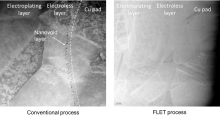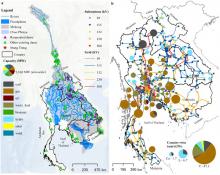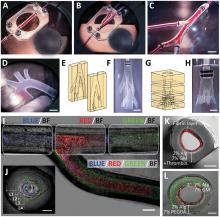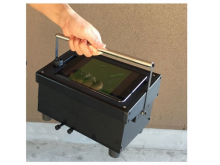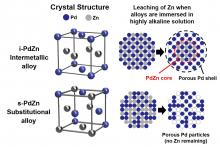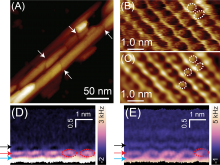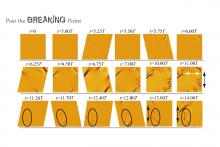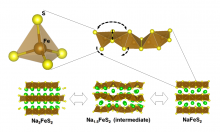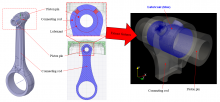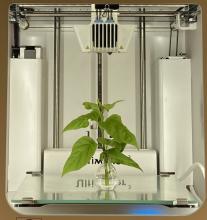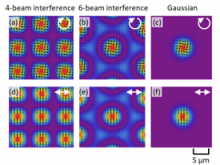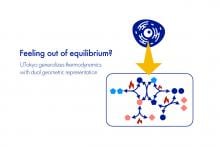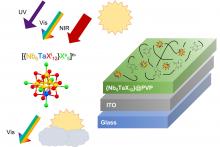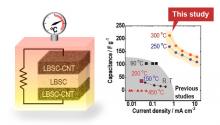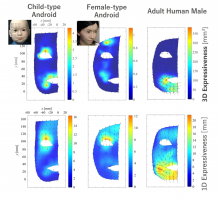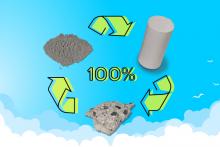Engineering & Technology
News
10 Nov 2022
Researchers from Osaka University have improved the electrical interconnects that are essential features of advanced printed circuit boards. By eliminating the accumulation of hydrogen nanobubbles at the copper–copper interface, the connection is more regular compared with that from the traditional interconnect fabrication method. This work will improve the reliability of high-density circuitry that's foundational to the long life of modern electronics.
04 Nov 2022
Scientists in Japan have combined two computational models to extract more data on steel alloys from a single test, with implications for the discovery of new materials.
02 Nov 2022
Scientists in Singapore show that restoring natural water availability to the Mekong’s floodplains is possible
02 Nov 2022
The biofabricated vascular models will pave the way for drug development and deeper understanding of cardiovascular diseases.
26 Oct 2022
Researchers from Osaka University have demonstrated a proof-of-concept for a novel molecular hydrogen production method that bypasses the need for expensive purification steps. They developed a system where hydrogen is separated and stored in liquid organic hydrogen carriers by catalysis of triaryl boranes in one seamless process. The results of this work will help facilitate the transition to a hydrogen-based economy that is necessary for a more sustainable future.
26 Oct 2022
Asbestos is a toxic substance that is found in older buildings, as well as in cosmetics and products for children. As testing for its presence can be problematic, Hiroshima University Professor Akio Kuroda has been working on a novel solution.
18 Oct 2022
Osaka Metropolitan University researchers have created intermetallic alloy nanoparticles of palladium and zinc with an alternating arrangement of zinc and palladium atoms. The intermetallic alloy is more corrosion-resistant than substitutional alloys while retaining the electrocatalytic properties of both metals, which could be useful for developing new non-precious metal electrocatalysts.
17 Oct 2022
Researchers from Osaka University have developed a way of printing edible QR codes—a kind of barcode—within cookies, meaning that the tag is embedded within the food itself. Crucially, the tag doesn’t change the flavor or outer appearance of the cookie, and can be read using a backlight while the cookie remains intact. This new method has great commercial potential for improving food safety and traceability in an environmentally friendly way.
17 Oct 2022
Chemists in Japan, Canada and Europe have uncovered flaws in the surface structure of cellulose nanocrystals—an important step toward deconstructing cellulose to produce renewable nano-materials relevant to biochemical products, energy solutions, and biofuels.
17 Oct 2022
The Malaysia Technology Expo (MTE) 2022: SDG International Innovation Awards & Expo (SDGIIAE) returns for its 2nd edition and the awards encourage the development of innovative solutions for local and global challenges.
14 Oct 2022
A new material is set to provide us with faster and higher resolution displays. Hokkaido University researchers could explain what makes this material so special, opening the door to its application and further development.
11 Oct 2022
Researchers at The University of Tokyo simulated fractures in amorphous materials due to both cyclic fatigue and constant stress using course-grained dynamics, and demonstrated various failure modes, which can help improve reliability of materials
11 Oct 2022
Osaka Metropolitan University scientists have successfully developed a new positive electrode material Na2FeS2, consisting of sodium, iron, and sulfur. During testing, batteries using the Na2FeS2 positive electrode had a high energy storage capacity and could be charged and discharged for more than 300 cycles. Because the Na2FeS2 is made of abundant inexpensive elements, it is expected to be used in all-solid-state sodium batteries with higher capacity and lower costs.
06 Oct 2022
Wear and tear in engines contributes to a lot of wasted fuel and can be dangerous for operators. Now, a collaborative group has created a way to computationally predict wear and tear in piston engines, allowing for enhanced safety measures in automobiles and industrial machinery.
01 Oct 2022
A joint group of researchers has successfully developed a method to recycle agriculture waste, namely pineapple leaf fibres, for making filaments that can be used for 3D printing of parts.
29 Sep 2022
Linked lanthanides shine light on crystal engineering, New technique reveals hidden genome, Red, white and blue alerts for dangerous bacteria & Windows gain competitive edge over global warming. Read all in the September's Editor's Choice plus this month's Asia Research News 2022 magazine pick - Floating sensors to gather ocean data.
27 Sep 2022
Osaka University researchers showed how to use laser beam interference to construct chiral structures. By using computer simulations, they were able to predict the final light pattern and optical radiation force distribution of any collection of light sources. This work may lead to cheaper optical devices and sensors.
20 Sep 2022
A research group led by the Institute of Industrial Science, The University of Tokyo, finds that sensory neurons in human skin modulate melanocytes via the secretion of Repulsive Guidance Molecule B
16 Sep 2022
Scientists from The University of Tokyo formulated nonlinear, nonequilibrium energy dissipation relationships using methods from geometry to better understand the kinetics of irreversible chemical processes
15 Sep 2022
Researchers develop a new integrated framework that factors in the many variables relevant to accurate carbon emissions modeling in the transportation sector, allowing for policymakers to choose the best path to achieve carbon neutrality.
15 Sep 2022
Measuring the velocity field of a fluid flow, such as air or water, allows for greater feedback and control, something that could boost the performance and fuel-efficiency of aircraft. A research group has developed, and now successfully tested, a new method to measure fluid flow velocities.
14 Sep 2022
Giants in History: Sir Mokshagundam Srinivasa Shastry Vishveshwarayya (15 September 1860 – 14 April 1962) is widely regarded as India’s most outstanding engineer.
07 Sep 2022
To automatically generate data for training deep convolutional neural network models to segment building facades, researchers from Osaka University used a three-dimensional model and game engine to generate digital city twin synthetic training data. They found that a model trained on these data mixed with some real data was competitive with a model trained on real data alone, revealing the potential of digital twin data to improve accuracy and replace costly manually annotated real data.
07 Sep 2022
Crucial to our everyday use the Li-ion battery can be found everywhere. Research at Tohoku University has resulted in a hybrid electrolyte that is both more stable while also retaining excellent conductivity. This will pave the way to a safer polymeric solid electrolyte for Li-ion batteries with a myriad of applications.
31 Aug 2022
An international collaboration is developing coating materials that could make windows better insulators.
29 Aug 2022
Tohoku University scientists in Japan have developed a mathematical description of what happens within tiny magnets as they fluctuate between states when an electric current and magnetic field are applied. Their findings, published in the journal Nature Communications, could act as the foundation for engineering more advanced computers that can quantify uncertainty while interpreting complex data.
26 Aug 2022
Thousands of educators, ,policymakers & technology leaders assemble to
discuss the future of education in Thailand
19 Aug 2022
A research group led by Professor Akitoshi Hayashi at the Osaka Metropolitan University Graduate School of Engineering has successfully developed a high-capacity capacitor, an energy storage device—using a solid electrolyte with high deformability—that can operate at high temperatures. With this discovery, high-capacity capacitors can now be made which do not require cooling, this increases their efficiency and allows for new suitable applications.
17 Aug 2022
Osaka University researcher devises a scale for quantifying of the ability of android to produce artificial facial expressions. By measuring the range of motion compared with humans, this work may lead to more expressive robot helpers.
09 Aug 2022
Researchers from the Institute of Industrial Science, The University of Tokyo have used thermal treatments to improve modern recycling of concrete. This work will add value to construction waste and contribute to sustainable development
Events
Sorry, nothing coming up for this discipline
- « first
- ‹ previous
- 1
- 2
- 3
- 4
Giants in history
Sorry, nothing coming up for this discipline


